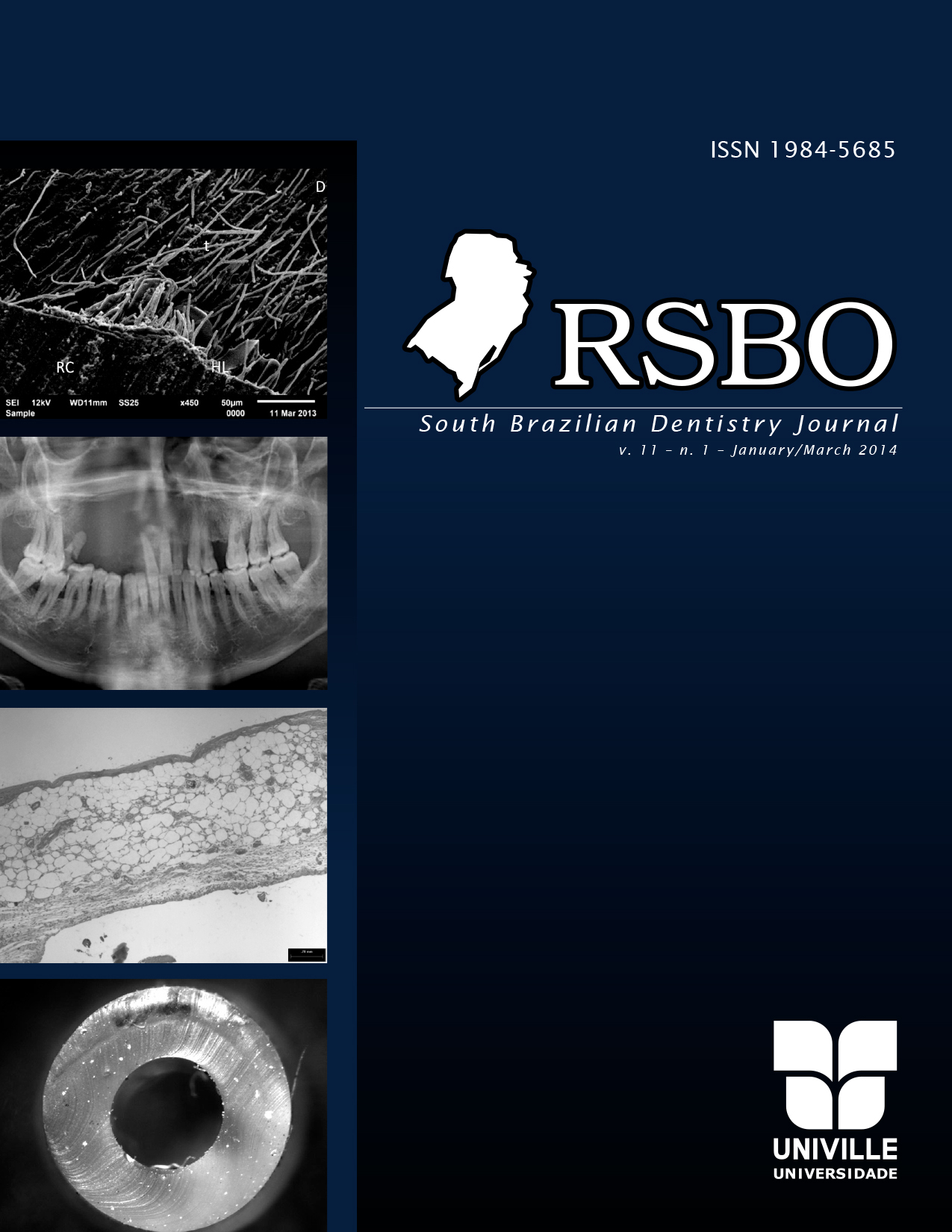Adhesion and formation of tags from MTA Fillapex compared with AH Plus® cement
DOI:
https://doi.org/10.21726/rsbo.v11i1.818Palavras-chave:
endodontic cement; adhesion; scanning electronic microscopy.Resumo
The aim of this study was two-fold:
1) to evaluate, in vitro, the shear bond strength of two sealers
by push-out test and 2) to assess the failures after displacement.
Additionally, the formation of tags was observed by SEM. Material
and methods: Forty mandibular premolars were selected and the
canals were subjected to biomechanical preparation with rotary
instruments. These specimens were divided into two groups according
to the sealer (n = 20): GI – MTA Fillapex and GII – AH Plus. All
roots were filled with sealer only, without gutta-percha. After a period
corresponding to three times the setting time of the sealer, the roots
were sectioned transversely into slices of 1 mm thickness, to obtain
one slice from the cervical third, to be used in the push-out test.
Following, two slices of each group were randomly chosen for ultrastructural analysis by scanning electron microscopy (SEM). The data
obtained in shear bond strength test were subjected to statistical
analysis. Results: AH Plus cement exhibited higher shear bond strength
values (1.332±0.75 MPa) than MTA Fillapex (0.071±0.07 MPa), with
statistically significant differences. Conclusion: MTA Fillapex has a
low bond strength with less formation of tags than AH Plus.

